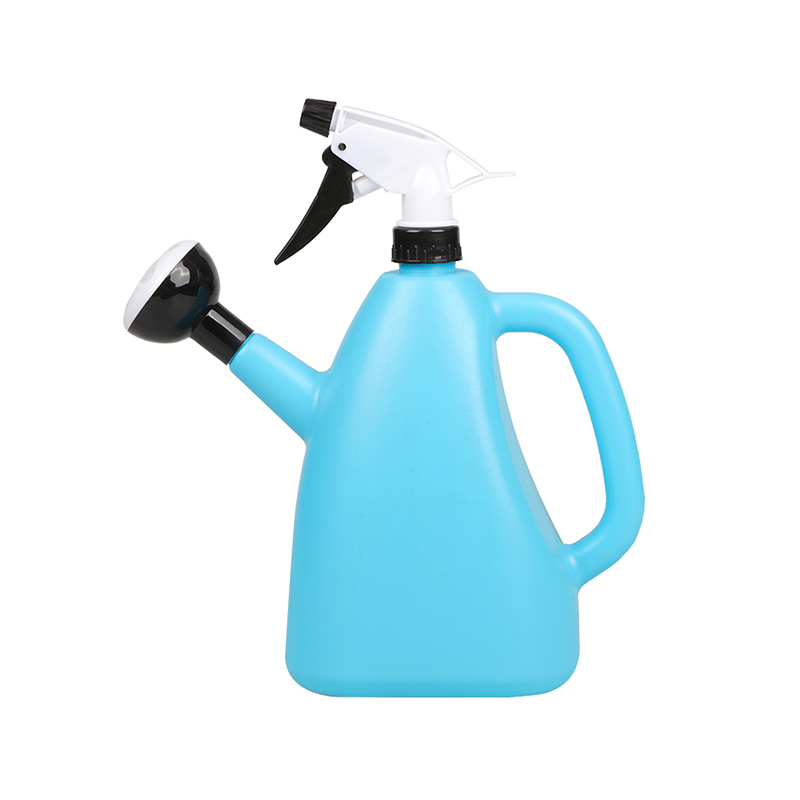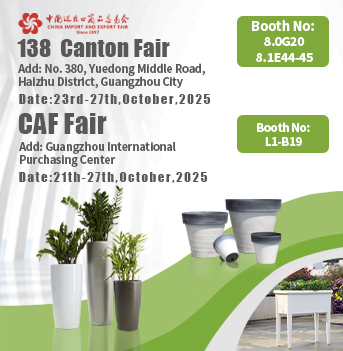Selecting the right Garden Pots Planters and Nursery Planter Pots is a practical decision that influences the success of plant growth, the efficiency of daily operations, and the presentation of plants in both retail and landscaping environments. From propagation to transport and final placement, the container design plays a role in supporting root systems and maintaining a stable growing environment. Understanding how planter features contribute to healthy nursery growth helps businesses and gardeners make more informed choices.

Supporting Root Development and Moisture Balance
The health of young plants often depends on consistent moisture levels and proper air circulation. Containers that lack drainage holes or have insufficient ventilation can result in excessive moisture retention, which increases the risk of root rot and mold. By selecting Nursery Planter Pots with thoughtful drainage designs, growers can help create a more balanced environment for root development.
Depth and shape are also worth considering. Shallow pots may suit certain herbs and seasonal flowers, while deeper designs help support plants with extensive root systems or taller stems. Many nurseries choose pots with tapered sides to make transplanting easier, reducing the chances of damaging roots when moving plants to larger containers or planting beds.
Incorporating options like raised bottoms or side slits can improve drainage and promote airflow to the soil. Over time, this contributes to more uniform growth and helps plants adapt more smoothly to outdoor planting.
Choosing Materials That Last Through Seasons
For nurseries managing high plant turnover and frequent handling, durable materials are important. Garden Pots Planters produced through injection molding are often selected for their balance of strength and light weight. They are easier to carry, stack, and store while still withstanding repeated watering cycles and temperature changes.
Plastic planters can also be manufactured with additives that improve resistance to UV exposure. This feature is helpful when containers are displayed outdoors or stored in sunlit areas for extended periods. For businesses and organizations pursuing sustainability goals, some materials can include recycled content or be developed in recyclable forms without compromising their functional qualities.
When planning long-term use, it is useful to evaluate how material thickness, flexibility, and texture will perform in specific climates and storage conditions. This can prevent issues like cracking, warping, or fading over time.
Practical considerations for handling and shipping
Nurseries and distributors often need to manage thousands of plants at once, so efficient handling is critical. Containers designed with smooth edges and stable bases reduce the risk of tipping during transport. Uniform sizes across batches also make stacking simpler, saving space in greenhouses and warehouses.
In bulk environments, uniform nursery pots help keep plant spacing consistent. This improves watering accuracy and supports uniform growth patterns. Square and rectangular pots are often used when shelf space is a priority, while round pots are better suited for display or retail.
Shipping logistics is another area where design is critical. Containers with reinforced edges or additional support ribs are less likely to deform under load, which helps protect plants during transport and storage. By considering shipping needs when planning container selection, nurseries can reduce the likelihood of plant damage and waste.
Customization to meet specific needs
While many nurseries rely on standard sizes and shapes, some applications require custom solutions. Custom molds can adjust the depth, width, or drainage features of pots to meet specific plant needs or planting systems. Businesses can also incorporate branding elements, such as embossed logos or color variations, to match their marketing strategies.
Customization services can also extend to labeling options that provide customers with care instructions or product details. For retailers and wholesalers, this simplifies customer education and strengthens the connection between product and brand.
When planning custom orders, clearly communicating the intended use, order volume, and delivery schedule can help ensure that design and production are in line with expectations and avoid unnecessary delays.
Balance price and performance
While durability and design are important, cost is often the deciding factor in choosing a garden pot. Bulk purchases can offer better prices, especially for nurseries and distributors who handle large orders. However, it is more helpful to evaluate the total value of the pot than just focusing on the initial price.
Considering factors such as longevity, handling efficiency, and storage compatibility can contribute to better long-term financial benefits. For example, a slightly increased investment in thicker materials or more robust construction during peak seasons can reduce replacement costs and product losses.
Order planning should also take into account delivery times, especially when customization is involved. Coordinating plans with suppliers can help maintain inventory levels and avoid delays during planting cycles or seasonal promotions.
Practical Support for Growing Operations
Whether a nursery supplies the local garden center or prepares plants for a landscaping project, reliable nursery pots and garden pots are key to keeping plants healthy and meeting production goals. Careful selection of materials, designs, and order quantities provide a solid foundation for efficient operations and successful plant cultivation.
By focusing on practical features and thoughtful planning, nurseries and retailers can create growing systems that effectively serve their plants and their customers.

 English
English 日本語
日本語 Español
Español Deutsch
Deutsch عربى
عربى

